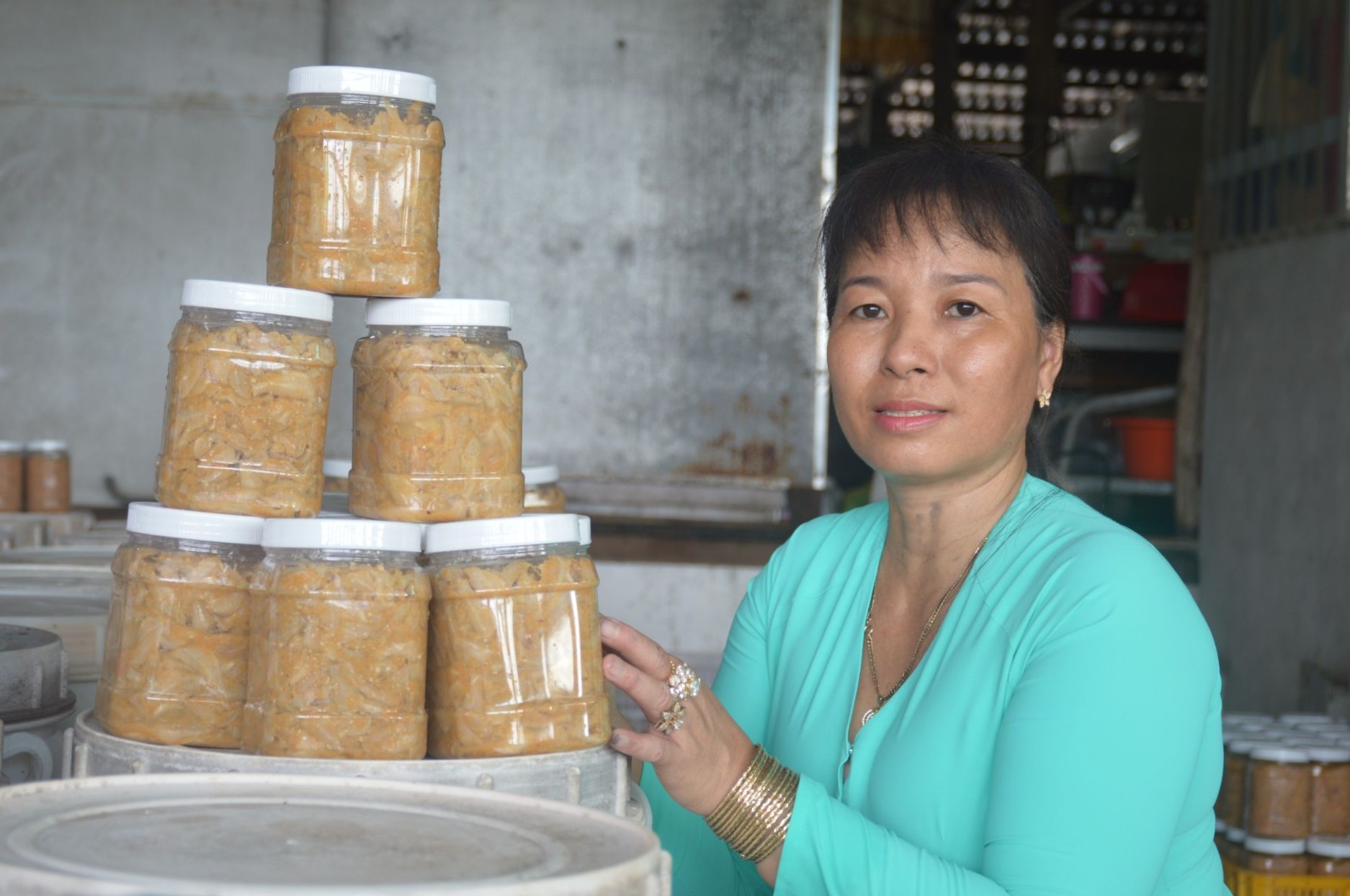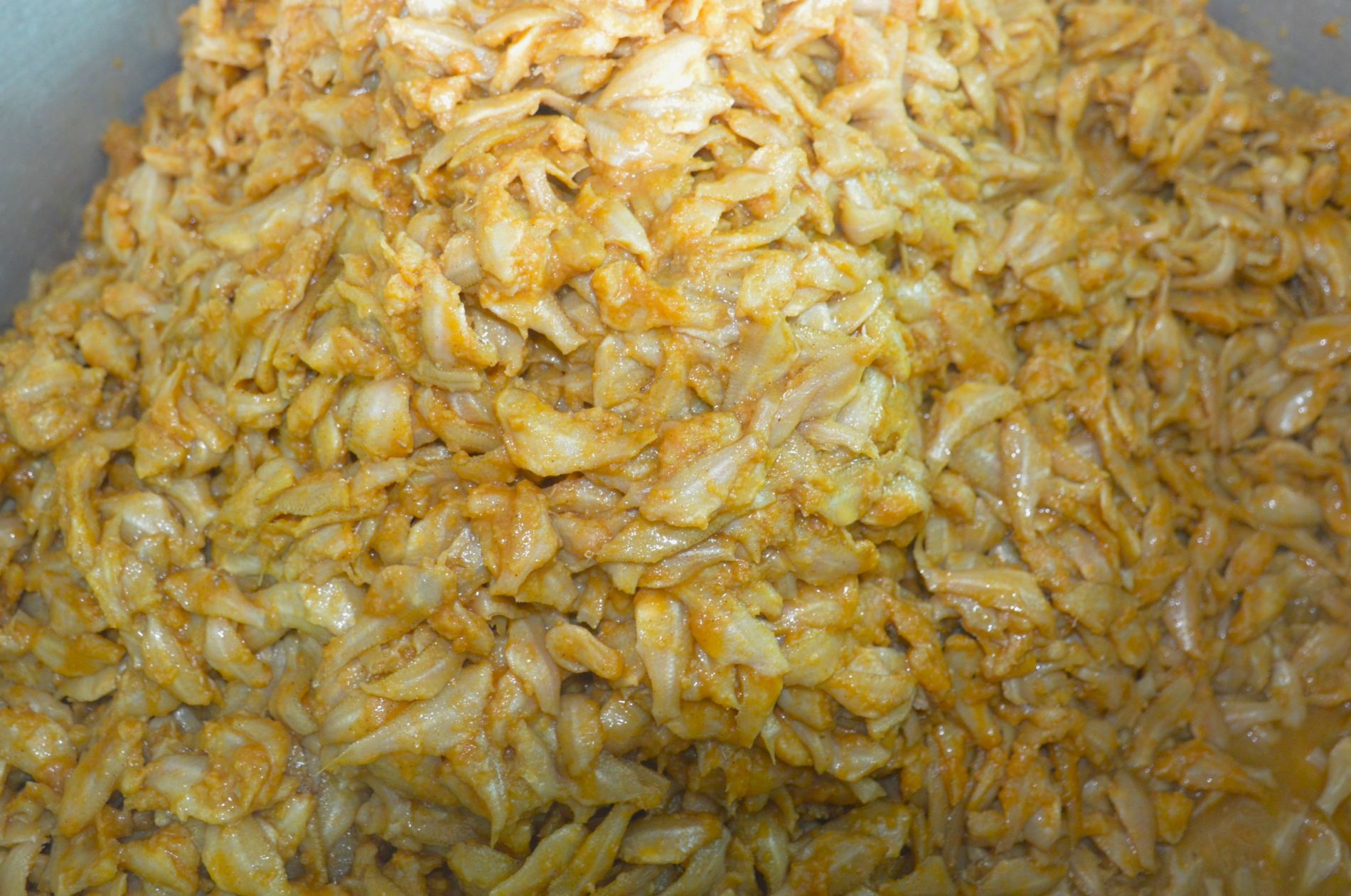Chuyen's production facility is located at her home in Ong Quyen Hamlet, Tan An Commune (formerly Ngoc Hien District). Dozens of containers holding fish sauce at various stages of production are neatly arranged and labeled in her yard. Each year, the facility supplies the market with approximately 4 tons of finished fish sauce.
 |
Chuyen beside jars of fish sauce ready for market. Photo: Chuc Ly |
Chuyen beside jars of fish sauce ready for market. Photo: Chuc Ly
According to Chuyen, in the 2000s, the coastal areas of Nam Can and Ngoc Hien districts had abundant “ca son” fish. This small, white fish, about the size of a fingertip, reproduces rapidly but wasn't popular. "At that time, people who caught “ca son” would discard them or use them as feed for shrimp and crabs. Almost no one bought them," she recalled.
In 2012, recognizing the plentiful supply of “ca son,” Chuyen began experimenting with making fish sauce. Initially, the product was only for family use or given as gifts. After receiving praise for its flavor and encouragement to expand, Chuyen started developing a standardized recipe for mass production.
“Ca son” are caught in large numbers from the 15th day of the first lunar month to the 15th day of the sixth lunar month. Because they can be preserved with salt for several months, Chuyen takes advantage of this to maintain year-round production. After being purchased, the fish are cleaned, scaled, and salted for one month. Next, they are rinsed, mixed with sugar, toasted rice powder, and alcohol according to a specific ratio, and then fermented in vats for two more months before being bottled.
 |
“Ca son” are cleaned and prepared for fish sauce production. Photo: Chuc Ly |
“Ca son” are cleaned and prepared for fish sauce production. Photo: Chuc Ly
Chuyen explained that the salting stage determines the quality of the product. Too much salt makes the fish sauce hard, while too little makes it sour. Good fish sauce should have a golden brown color, soft and sweet flesh, tender bones, a slightly sour taste, and a rich flavor.
Initially, Chuyen faced difficulties bringing her product to market. She personally visited markets to promote her fish sauce and then rented a stall at the Cai Nuoc town market. She only sold a few kilograms each day, but she persisted in introducing her product to consumers. A few years later, with support from the local government, she participated in trade fairs and agricultural product promotion programs.
From a few dozen kilograms of fish sauce per month, Chuyen’s facility now produces about 4 tons annually. In addition to the traditional “ca son” fish sauce, she has developed other products like crispy dried “ca son,” “ca doi” fish sauce, “ca mong ga” fish sauce, and shrimp paste to diversify her offerings.
 |
The finished “ca son” fish sauce has a golden brown color, a slightly sour taste, and soft flesh. Photo: Chuc Ly |
The finished “ca son” fish sauce has a golden brown color, a slightly sour taste, and soft flesh. Photo: Chuc Ly
Recently, she expanded her sales channels through social media to reach new customers. She and her husband invested nearly 100 million VND in scaling machines, mixing machines, and grinders to optimize the production process. The facility now purchases about one ton of “ca son” each month from local people, with raw material prices ranging from 5,000 to 6,000 VND per kg. Two kg of fresh fish yield one kg of finished fish sauce.
After deducting expenses, Chuyen's facility generates hundreds of millions of VND in revenue annually and provides stable employment for dozens of local women. The “ca son” fish sauce is sold for 90,000-100,000 VND per kg, mainly in the Mekong Delta and Southeast regions. The product has been recognized and awarded the 3-star OCOP (One Commune One Product) certification at the provincial level.
Chuc Ly












